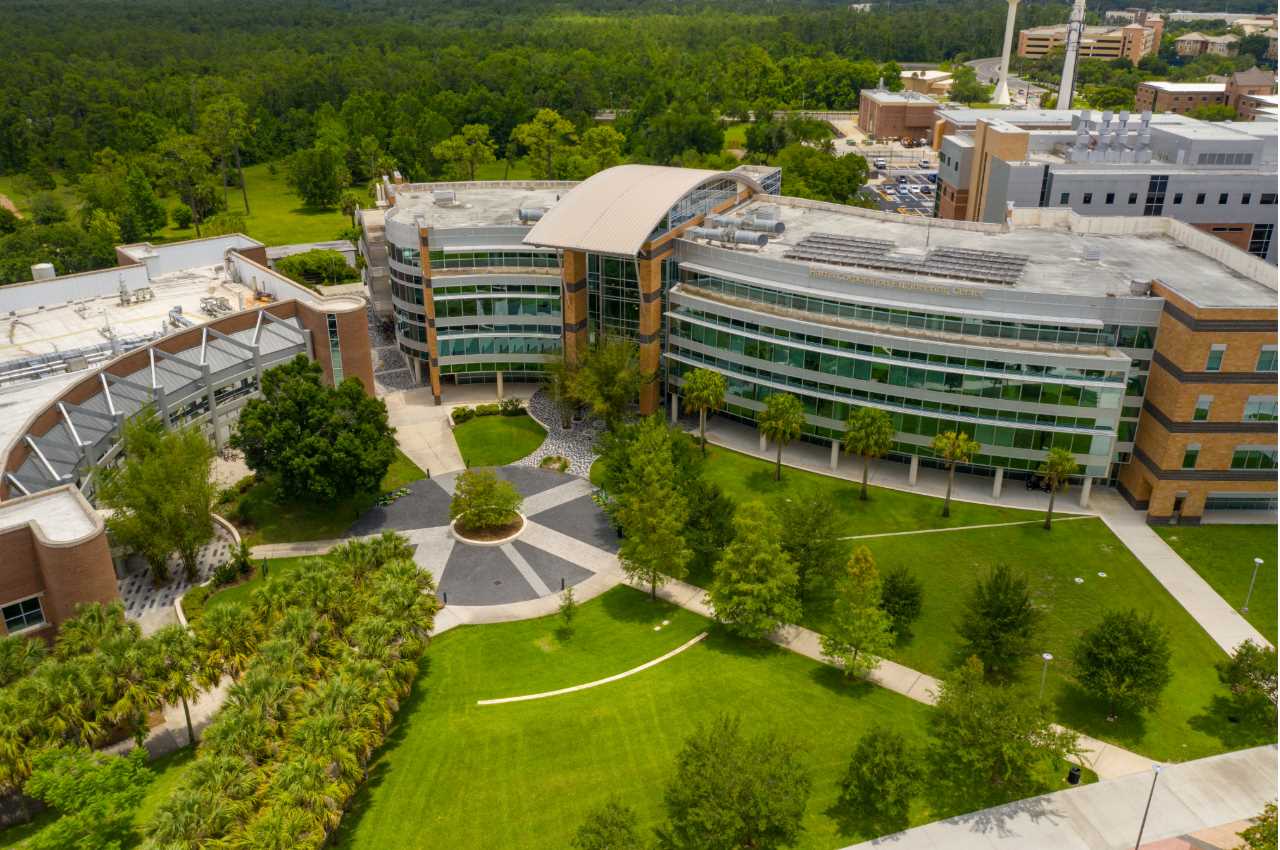Largest Universities in the U.S.

When it comes to continuing education in the United States, the bigger the campus, the better. The size of a university can significantly impact a student's experience and opportunities available to them, as well as their surrounding community.
Today, we will take a closer look at large universities in the U.S., exploring what makes them unique and why they are so important. We will also go over their impacts on society, as well as our list of the ten largest universities in the U.S. Here at Bold.org, we don’t want you to miss a thing.
Looking to go back to school? Check our blog for everything college-related, and learn how to apply for a scholarship today!
Create a Bold.org profile and use the scholarship search feature to access hundreds of exclusive scholarships.

Understanding University Size: Enrollment and Campus Area
Before we can explore the significance of large universities, it's important to understand what we mean by "size" when it comes to some of the nation’s largest colleges. When people refer to a university's size, they usually refer to two main factors: total enrollment and campus area.
First, enrollment refers to the number of students enrolled at a particular university or university college. It gives us an idea of how many students are studying there and the scale of the academic community. Higher enrollments often mean larger student bodies, which can contribute to a more diverse and vibrant campus life. With a larger student population, universities have the opportunity to offer a wider range of academic programs and extracurricular activities, providing students with more options to explore their interests and passions.
Secondly, campus area refers to the physical size of the university grounds. It encompasses not only more buildings but also dormitories, recreational facilities, and other campus resources. Larger campus areas can provide students with extra space to study, socialize, and engage in various activities, such as joining student organizations. It can also allow for the development of state-of-the-art facilities, such as research centers, libraries, and sports complexes, enhancing the overall learning experience for students.
Defining Size
So, does size really matter? When evaluating the size of a university, it is essential to consider both enrollment and campus area altogether. While big colleges may have a high enrollment, they may still have a relatively small campus area, resulting in a more compact and populated campus. On the other hand, a university with a smaller enrollment may have a larger campus area, providing its student body with more open spaces and a greater sense of freedom.
Furthermore, the distribution of resources within the campus area can also impact the perception of a school's size. A university with a concentrated campus area, where academic buildings, dormitories, and other student life facilities are closely located, may give the impression of a larger and more interconnected institution. As opposed to a university with scattered buildings and facilities across a vast campus area, it may appear more spread out and decentralized.
Factors Contributing to Size
There are several factors that contribute to the size of a university. One of the most important factors is demand. As more people seek to continue their education, universities will need more room to accommodate them. This expansion can involve the construction of new buildings, increasing the capacity of existing facilities, and hiring more faculty members. By meeting the growing demand for education, universities can attract a larger student body and establish themselves as prominent institutions in the academic landscape. Think of it as home improvements for the intellects.
Also, colleges that offer a wider range of programs often attract a larger student enrollment. The diversity of academics can appeal to students with multiple interests and career aspirations, leading to higher enrollment. These universities may have more than one college or school within their structure, each specializing in different fields. This range of academics can enrich the environment and encourage collaboration among students and faculty.
Another factor contributing to university size is the availability of resources. Larger universities tend to have more funding, which means more opportunities to invest in the school’s infrastructure and attract top-tier faculty. In turn, these resources enable them to offer a wider range of academic opportunities and support for students and faculty. Well-funded universities can provide state-of-the-art facilities, research grants, scholarships, and other financial aid options, making them more attractive to prospective students.
Get Matched to Thousands of Scholarships
Create your Bold.org profile to access thousands of exclusive scholarships, available only on Bold.org.
Create Free ProfileThe Importance of Large Universities
They say you will meet some of the best people in college. We agree, especially if you’re attending a big school. Large universities play a crucial role in shaping relationships with people from all corners of the world. They provide a safe space for multicultural student populations to come together, promoting a healthy cultural exchange and understanding environment. Let's look at what that means for undergraduate and graduate students.
Diverse Student Populations
One of the key advantages of attending a big college is the opportunity to interact with a large group of students from various cultural backgrounds. With a larger student body, these universities often attract students worldwide, creating a vibrant and multicultural community. This exposure to different cultures and perspectives enriches the learning experience and prepares students for the real world after graduation.
Picture this: you're walking through the bustling campus of a large university, and you can hear different languages spoken, see students wearing traditional attire from their home countries, and taste a variety of cuisines at the international food fair. This bright atmosphere will not only broaden your cultural horizons (and palette) but also challenge your perspective on diversity.
Interacting with peers from different backgrounds allows students to better understand other cultures, traditions, and practices. It promotes empathy, understanding, and the ability to work collaboratively with people with different viewpoints and beliefs. These skills are invaluable in today's society.
Create your free profile to apply for scholarships today!Wide Range of Academic Opportunities
Attending a university means seeking an opportunity. Large universities are known for their extensive collegiate opportunities, and with a diverse faculty and a multitude of departments and programs, students have access to a wide range of academic options that can help them with their interests and passions. Large universities often have the resources to support a wide range of academic fields, whether it's the arts, sciences, business, or engineering. These resources allow students to pursue interdisciplinary studies and find their niche.
Another pro about big colleges is choices! At a large university, students can choose from hundreds of majors and minors and even create their own unique academic path. You can take courses in subjects you never thought you would explore, like ancient history, computer science, or astrophysics, and discover new passions along the way! The academic landscape of a large university is broad enough to ensure that there is something for everyone, encouraging students to explore different paths and not be afraid to try something new.
Also, large universities often have well-equipped research facilities, libraries, and laboratories. These resources provide students with hands-on learning experiences. These resources encourage students to engage and collaborate with esteemed faculty members on research and contribute to advancing knowledge in their chosen fields.
Lastly, large universities often attract expert scholars and experts in various fields. Students can learn from esteemed professionals, attend lectures and conferences, and participate in discussions that challenge their perspectives and expand their knowledge.

The Impact of Large Universities on Their Communities
Large universities not only influence the lives of their students, but they also help their surrounding communities and create influence within their cities. Let's explore some of how these institutions significantly impact their surroundings.
Economic Contributions
Large universities' economic impact is one of the most significant contributions to their communities. The presence of a university brings in a steady stream of income through tuition fees, research grants, donations, and other funding sources. The university's faculty and staff often contribute to the local economy by spending their salaries in the community, as well. A college town also guarantees lucrative outcomes for local businesses. Whether it be going out to dinner, enjoying a movie, or having drinks at a bar (if you’re legal!), not to mention having visitors such as family and friends, the presence of a large study population will boost the local economy and help keep businesses afloat.

Cultural Influence
One factor most people tend to overlook is the cultural influence a large campus can have on the students and the community. Large universities are cultural hubs, offering students and the broader community a wide range of artistic and intellectual experiences. Though higher education can be rigorous and demanding, universities also find ways to bring students and faculties together to let their hair down. They often host concerts, theater productions, art exhibitions, sports rallies, and lectures by renowned speakers. These events enrich students' lives and contribute to the cultural vibrancy of regional campuses and the surrounding community. It's also known that universities often collaborate with local organizations and businesses to be inclusive, fostering a sense of partnership and mutual enrichment.

The 10 Largest Universities in the U.S.
Now, let's turn our attention to the ten largest universities in the United States. These institutions, often referred to as "mega-universities," are home to tens of thousands of students. Let's take a closer look at education statistics for each of them:
- University of Central Florida, located in Orlando, Florida, has the highest undergraduate enrollment of any university in the US. With over 69,000 students, UCF offers a wide range of programs with a strong emphasis on research and innovation.
- Texas A&M University in College Station, Texas, is famous for its growing engineering and agricultural programs. With an enrollment of over 68,000 students, it is one of the largest universities in the world.
- Ohio State University, located in Columbus, Ohio, is known for its comprehensive programs and vibrant campus life. With over 61,000 students, it is right behind Texas A&M as one of the biggest campuses in the US.
- Florida International University, based in Miami, Florida, is a larger university and a thriving research institution with over 58,000 students. It offers diverse programs and is known for its international focus.
- University of Florida, located in Gainesville, Florida, is widely recognized as a top-tier research institution. With an enrollment of over 56,000 students, it offers an extensive range of programs for both undergraduate and graduate students.
- University of Minnesota is one of the premier universities for research in the US, with its Twin Cities campus in Minneapolis and St. Paul, Minnesota. With over 50,000 students, UM is ranked #6 in the country for largest campuses.
- Arizona State University in Tempe, Arizona, is known for its innovative approach to education and commitment to serving the community, with a total student enrollment of over 50,000.
- University of Texas' system is one of the largest public universities in the US, with multiple campuses across the state. The flagship campus in Austin, Texas, is the biggest, with an enrollment of over 51,000 students.
- Indiana University, located in Bloomington, Indiana, is a prestigious institution with a wide range of academic programs with an enrollment of over 43,000 students. Though it holds lower enrollment numbers, it is still a large university.
- Pennsylvania State University, also known as Penn State, is a leading research institution in State College, Pennsylvania, with an enrollment of over 46,000 students and one of the most-known campuses in the country.

Frequently Asked Questions About Large Universities
What are some of the advantages of going to a large college?
The advantages of attending a large college campus can range anywhere from more space for academic structures and student leisure to the vast benefits of attending a school that offers cultural diversity. However, it's not just students who prosper from attending a big university college. Its surrounding community can flourish, as well!
Does the size of a campus really matter?
It ultimately comes down to your personal preferences and what you're looking for in your college experience. If you like big communities, more room for students, and academic opportunities, a large university seems the right way to go! But if you believe less is more regarding your institution, that's okay, too.
Where are the largest universities located?
As you can see in our list above, large universities are located all over the US! From the East to West coasts, students have a wide range of options on where to pursue their education. If you have any questions about which school is best for you, check out our blog on the best college towns for more information!
If you’re considering attending a large university or continuing your education, create a free Bold.org profile and apply for scholarships today!